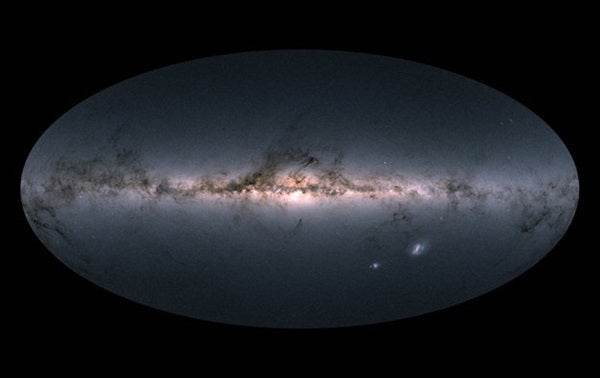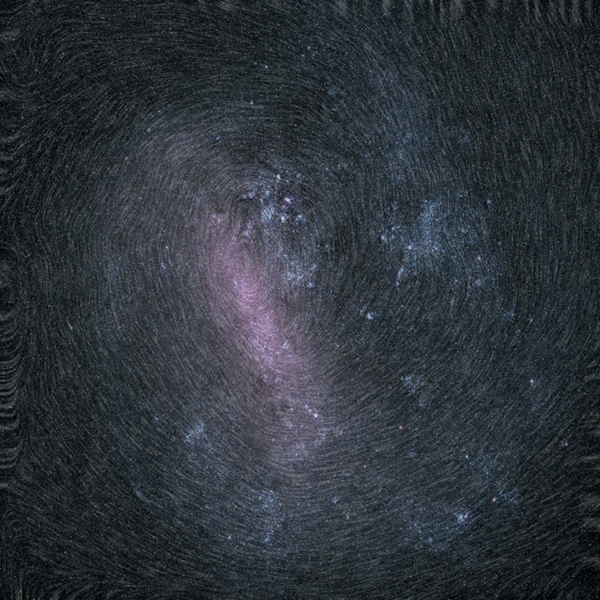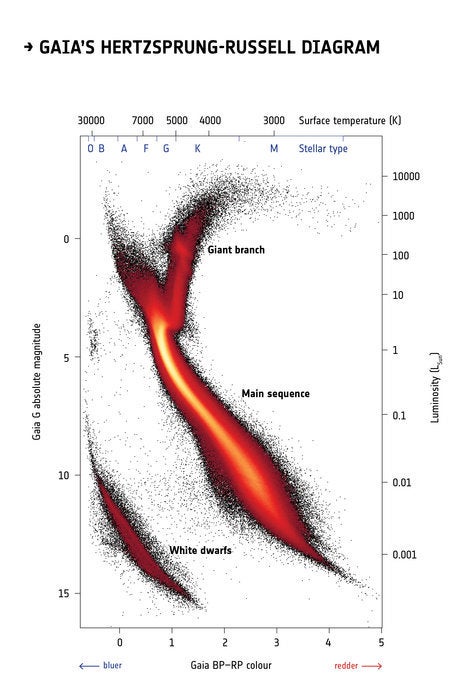From July 2014 to May 2016, Gaia logged the positions, motions, and distances of over one billion stars, analyzed surrounding dwarf galaxies, and took measurements of stars outside of the Milky Way galaxy. By studying Gaia’s stellar motion and population data, researchers hope to better understand the Milky Way’s formation and evolution.
“The observations collected by Gaia are redefining the foundations of astronomy,” said ESA Director of Science, Günther Hasinger, in a press release. “Gaia is an ambitious mission that relies on a huge human collaboration to make sense of a large volume of highly complex data. It demonstrates the need for long-term projects to guarantee progress in space science and technology and to implement even more daring scientific missions of the coming decades.”
Launched in 2013, Gaia compiled the motions and distances of two million stars during its first year in operation. Now, with star data climbing into the billions, Anthony Brown, chair of the Gaia Data Processing and Analysis Consortium Executive, relies on a staff of 450 scientists and software engineers to catalogue it all.
Gaia created this image of the Large Magellanic Cloud, one of the Milky Way’s neighboring galaxies, using data collected during the sky survey. Gaia is capable of differentiating the perceived movement of stars from their actual movements, with the texture in this image representing the stars’ true motion across the galaxy.
Gaia also recorded the brightness of each star and measured the color of almost all of the 1.7 billion stars surveyed. From this, the researchers created an extremely detailed Hertzsprung-Russell diagram — a chart that compares the brightness of stars to their colors. The diagram, which is made up of four million stars that lie within 5,000 light-years of the Sun, will allow astronomers to study the population and evolution of stars in various parts of the Milky Way.
Gaia’s Hertzsprung-Russell diagram, named after the two 20th century astronomers who created the charting method, plots more than 4 million stars according to their brightness (vertical axis) and their color (horizontal axis). Where each star is grouped on the diagram depends on its mass, age, chemical composition, and stage of life.
Gaia’s survey data goes beyond stars, too. It observed the motions of over 14,000 asteroids in our solar systems, enabling researchers to track their orbits. Gaia is expected to announce details of a significantly larger asteroid sample in future data releases.
With so many celestial objects in and around the Milky Way, it’s important to understand how everything coexists. Mapping the locations and motions of those objects help researchers understand our galactic formation, evolution, and future.
“Gaia is astronomy at its finest,” said Gaia mission manager, Fred Jansen of ESA. “Scientists will be busy with this data for many years, and we are ready to be surprised by the avalanche of discoveries that will unlock the secrets of our Galaxy.”












